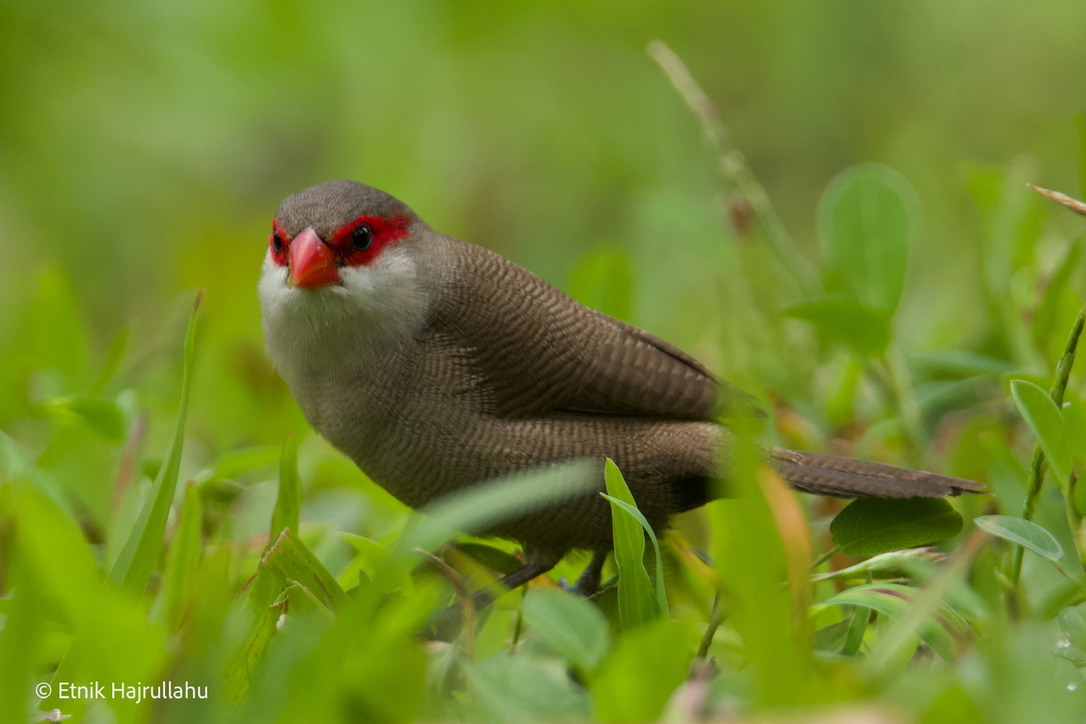The common waxbill (Estrilda astrild) is a small passerine bird species that is native to sub-Saharan Africa.
Appearance
The common waxbill is a small bird that measures about 10-12 centimeters (4-5 inches) in length and weighs around 10-12 grams. It has a distinctive red bill and reddish-pink coloration on its breast and vent area. The wings and back are brown, and there is a black patch on the throat. The head is adorned with a bright red band, which gives the bird its common name. Females are similar in appearance to males, but have a slightly duller coloration.
Habitat and Distribution
Common waxbills are found in a variety of habitats, including grasslands, savannas, and scrub lands. They are native to sub-Saharan Africa, and can be found in countries such as Senegal, Ethiopia, and South Africa.
Behavior and Diet
Common waxbills are social birds and are often found in flocks. They feed on a variety of small seeds, as well as insects and other small invertebrates. They are known for their acrobatic feeding behavior, often hanging upside down to extract seeds from grass heads. Common waxbills are monogamous and form strong pair bonds. They build a small, cup-shaped nest made of grass and other plant materials.
Conservation Status
The common waxbill is classified as a species of “Least Concern” by the International Union for Conservation of Nature (IUCN). However, like many bird species, it is threatened by habitat loss due to agricultural expansion and human development.
Interesting Facts
- The common waxbill is a popular species for aviculture, and is often kept as a pet.
- The species has been introduced to some parts of the world, including Hawaii and Puerto Rico.
- The common waxbill is sometimes called the “st. helena waxbill” due to a historical misidentification of the species on the island of St. Helena.
In summary, the common waxbill is a colorful and social bird species that is native to sub-Saharan Africa. Its acrobatic feeding behavior and distinctive appearance make it a popular species for aviculture, while its presence in the wild highlights the importance of preserving natural habitats for all bird species.

